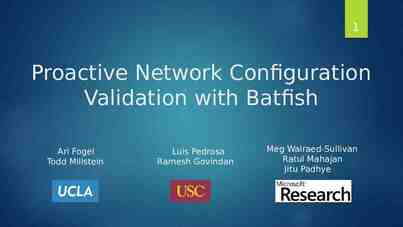AI in Business Hadley Stephens Keisha Rose-Harvey Josiah Johnson
18 Slides2.67 MB

AI in Business Hadley Stephens Keisha Rose-Harvey Josiah Johnson

2 Goals Provide an overview of the monumental impacts artificial intelligence (AI), is having or will have on the global economy in order to inform and prepare future leaders Definition State of AI Value Creation for Modern Businesses and Leaders Risks and Limitations Conclusion 2/13/24 Sample Footer Text

3 Artificial Intelligence (AI) - Human intelligence is simulated in computers and machines, giving them the ability to mimic human thinking and actions There are three types of AI based on capabilities and four types based on functionalities 2/13/24 Sample Footer Text

4 Types of AI – Based on Capabilities Types Artificial Narrow Intelligence (also known as Weak AI, Reactive Machine AI and Limited Memory AI) Artificial General Intelligence (also known as Strong AI and Theory of Mind AI) Artificial Superintelligence Definition (also known as Super AI and Self-Aware AI) 2/13/24 Example(s) Trained to perform a single or narrow task, with the goal of being faster or better than a human mind Cannot perform outside of its defined task; rather it targets a single subset of cognitive abilities and advances in that spectrum Only type of AI that exists today Virtual assistants: Siri, Alexa, Google Assistant and IBM Watson Recommendation engines (e.g., Netflix) IBM Deep Blue (chess player) Generative AI - ChatGPT Self-driving cars Use previous learnings and skills to accomplish new tasks in a different context without the need for trainings Learn and perform any intellectual task that a human being can do Theoretical concept Think, reason, learn, make judgements and possess cognitive abilities that surpass those of human beings Evolved beyond the point of understanding human sentiments and emotions, have needs and possess beliefs and desires of its own Theoretical concept Sample Footer Text

5 State of AI - Overview Already Using Gen AI - (% of respondents) 2022/2023 – Breakout years for generative AI (Gen AI); McKinsey survey (Apr-23): Using Gen AI in at least one business function ( 33%) C-suite personally using Gen AI ( 25%) Organizations will increase investments in AI because of advancement in Gen AI (40%) Gen AI use is already on their board’s agenda (28%) Share of S&P 500 CEOs who expect AI to impact company headcount: Next year: 20% say lower; 40% say unchanged Five years: 75% say lower; 18% say unchanged Long way to go 2/13/24 Sample Footer Text

6 State of AI – Common Uses 2/13/24 Sample Footer Text

7 State of AI – Investment Activity Despite the increase in utilization, global private investment of 91.9b was down 26.7% in 2022 M&A and public offers were also down New AI startups were 1,392 in 2022, down 12% Could reach 200b per year by 2025 Top countries in 2022: U.S. ( 47.4b); 3.5x larger China ( 13.4b) U.K. ( 4.4b) All three countries also have the highest cumulative investment since 2013, in the same order U.S. ( 249b); China ( 95b); U.K. ( 18b) 2/13/24 Sample Footer Text

8 State of AI – Focus of Investments Focus area that attracted the most private investment in 2022: Medical and healthcare ( 6.1b) Data management, process and cloud ( 5.9b) Fintech ( 5.5b) Cybersecurity and data protection ( 5.4b) Retail ( 4.2b) 2/13/24 Sample Footer Text

9 State of AI – U.S. Executive Order President Biden issued U.S.’ first AI executive order in October 2023 1. Creating new safety and security standards for AI Sharing of safety tests with federal government; AI watermarking; cybersecurity and flaw detection tools 2. Protecting consumer privacy (including establishing guidelines) 3. Advancing equity and civil rights Guidance to landlords and federal contractors to avoid AI algorithms causing discrimination; roles of AI in justice system, including sentencing, risk assessments and crime forecasting 4. Protecting consumers overall 5. Supporting workers 6. Promoting innovation and competition 7. Working with international partners (including establishing worldwide standards) 8. Developing guidance for federal agencies use and procurement 2/13/24 Sample Footer Text

10 Where Can AI Make a Difference per S&P 500 Revenue Growth Azure Cognitive Services Autonomous Customer Vehicles Digital Transformation Personalizing Experience Customer Support Advertising and Process Data Storage and Adobe Experience Automation Business Marketing Management Support DecisionPricing and Inventory Integration Making Cloud Healthcare and Medical Management Deep Platforms Data Processing Nvidia AI UseLearning Investments Cases Practices Data Center GPU Nvidia RTX Edge Intelligence Some Additions To Consider: Cybersecurity/risk management & HR/Talent Management 2/13/24 Sample Footer Text

Value Creation for Modern Businesses and Leaders – Labor Impacts 42% of companies expect an employee decrease greater than 3% Only 38% of companies expect to reskill more than 20% of employees displaced High performers three times more likely to reskill 2/13/24 Sample Footer Text 11

Value Creation for Modern Businesses and Leaders – Company Financials Largest cost decreases in the service operations sector Finance and R&D sectors are least effected and still 31% of respondents stated costs decreased Largest revenue increase coming from the manufacturing sector Over 50% of respondents report revenue increases from AI adoption 2/13/24 Sample Footer Text 12

13 Value Creation for Modern Businesses and Leaders – What are CEOs Saying Per Stanford Research report: “On the topic of Business Integration, Companies often cite AI and machine learning (ML) use cases to reassure business audiences of safer business practices, growing opportunities, streamlining processes and capability expansion” ”In terms of Process Automation, business leaders emphasize the ability of AI tools to accelerate productivity gains and to deliver a better customer experience.” “The conversation surrounding pricing and inventory management saw companies reassuring business audiences on how their use of AI would improve their operational strength, especially in environments of high inflation and supply chain challenges.” “There is also a vibrant discussions about the ways in which AI can change healthcare and medical practices, more specifically to reduce costs, improve the patient experience and better serve clinicians” Business Integration: “Especially in the last year or so, the field of robotics itself has actually changed because of AI and ML coming to the picture, there’s significant developments in the robotics field. So we think it’s a huge opportunity for us.” – Raj Subramaniam, CEO, 2/13/24 FedEx (Q3 2022) Pricing and Inventory Management: “We are continuing to refine and invest in machine learning tools that will allow for more sophisticated competitive pricing and great automation at scale” – Adrian Mitchell, CFO, Macy’s (Q3 2022) Process Automation: “We continue to drive the use of automation and artificial intelligence to drive productivity gains to help offset inflationary pressures” – Jim Davis, CEO, Quest Diagnostics (Q4 2022) Healthcare and Medical Practices: “[Using] machine learning and robotics, we can now resolve a wide range of prescription drug claims which previously required the attention of our pharmacists, freeing them up to spend time with patients. This advanced approach reduces overall cost and improves the patient experience.” SampleCEO, Footer TextHealth – Karen Lynch, CVS

14 Risks Only 21% of companies have established policies governing AI Policies tend to focus on proprietary information There has been a drop from 51% to 38% of organizations who are mitigating AI Cybersecurity since 2022 Regulatory and legislative uncertainty 2/13/24 Sample Footer Text

15 Limitations Skilled workers are in high demand with supply limited Most jobs in the space are highly specialized and not easily obtained High performers major problems are model/tools and talent Low performers biggest concerns are strategy and talent 2/13/24 Sample Footer Text

16 Conclusion Solutions to risks/limitations: Advocating and policy engagement – all stakeholders at the table to establish sensible policy, regulations, protocols, controls, processes (including quality assurance) and standards Disciplined roll-out and cyber security investment Re-shape workforce at early age (k-12, college) Begin on-the-job training and building resources early Limitations on Strong and Super AI Establish labor and consumer protections As these risks/limitations are mitigated, AI will be a major force in the global economy that the modern businesses and leaders should prepare to capture 2/13/24 Sample Footer Text

17 Bibliography Field, H., & Feiner, L. (October 30, 2023). Bided Issues U.S. First Executive Order, Requiring Safety Assessments, Civil Rights Guidance, Research on Labor Market Impact. CNBC. Retrieved on October 30, 2023, from https://www.cnbc.com/2023/10/30/biden-unveils-us-governments-first-ever-ai-executive-order.html Goldman Sachs (2023, August 1). AI Investment Forecast to Approach 200 Billion Globally by 2025. Goldman Sachs. Retrieved on October 29, 2023, from https://www.goldmansachs.com/intelligence/pages/ai-investment-forecast-to-approach-200-billion-globally-by-2025.html Haan, K. (2023, April 24). How Businesses Are Using Artificial Intelligence in 2023. Forbes Advisor. Retrieved on October 22, 2023, from https://www.forbes.com/advisor/business/software/ai-in-business/ IBM Data and AI Team (2023, October 12). Understanding the Different Types of Artificial Intelligence. IBM. Retrieved October 29, 2023, from https://www.ibm.com/blog/understanding-the-different-types-of-artificial-intelligence/ Likhadzed, V. and Klubnikin, A. (2023, July 12). How Much Does Artificial Intelligence Cost? Well it Depends. Itrexgroup. Retrieved on October 16, 2023, from https://bernardmarr.com/how-amazon-uses-artificial-intelligence-the-flywheel-approach/ Maslej, N., Fattorini, L., Erik, B., Etchemendy, J., Ligett, K., Lyons, T., Manyika, J., Ngo, H., Niebles, J.C., Parli, V., Shoham., Y., Wald, R., Clark, J., & Perrault, R. (April, 2023). The AI Index 2023 Annual Report. AI Index Steering Committee, Institute for Human-Centered AI, Stanford University, Standford, CA. Retrieved on October 29, 2023, from https://aiindex.stanford.edu/wp-content/uploads/2023/04/HAI AI-Index-Report 2023.pdf Mckinsey and Company (2023, June 14). The Economic Potential of Generative AI. The Next Productivity Frontier. Mckinsey & Company. Retrieved on October 29, 2023, from https://www.mckinsey.com/capabilities/mckinsey-digital/our-insights/the-economic-potential-of-generative-ai-the-next-productivity-frontier McKinsey and Company (2023, August 1). The State of AI in 2023. Generative AI's Breakout Year. Mckinsey & Company. Retrieved on October 29, 2023, from https://www.mckinsey.com/capabilities/quantumblack/our-insights/the-state-of-ai-in-2023-generative-ais-breakout-year Roberts, Z.(2023, February 24). The Role of AI in Modern Business: Opportunities and Challenges. LinkedIn. Retrieved on October 24, 2023, from https://www.linkedin.com/pulse/role-ai-modern-business-opportunities-challenges-zack-roberts/ Warren, T. (2023, March 16). Microsoft Announces Copilot: AI-powered Future of Office Documents. The Verge. Retrieved October 26, 2023, from https://www.theverge.com/2023/3/16/23642833/microsoft-365-ai-copilot-word-outlook-teams 2/13/24 Sample Footer Text

Thank You






